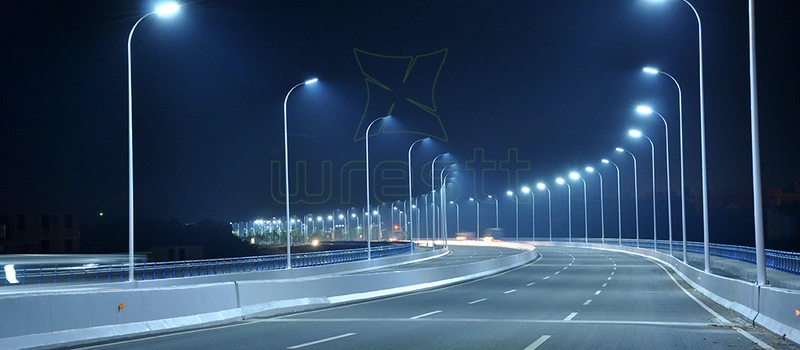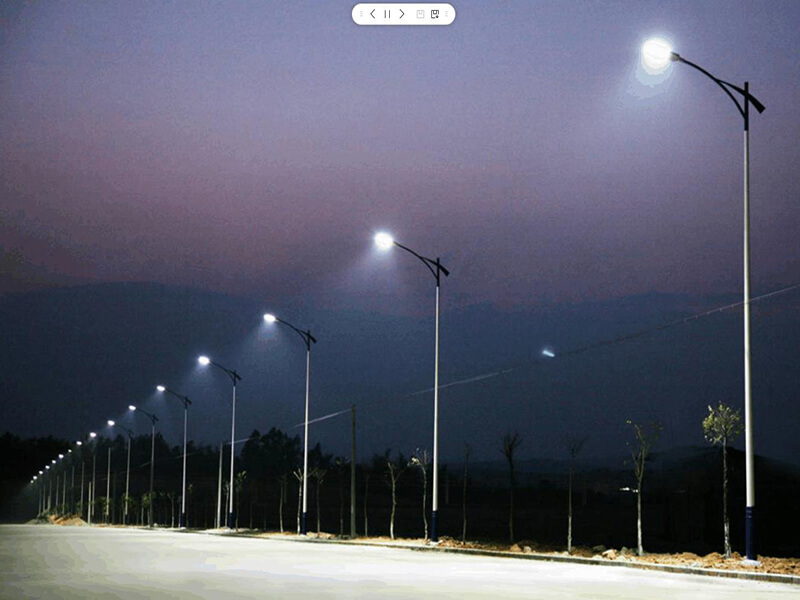With the gradual improvement of living facilities, there are more and more LED street lights. We need street lights in both residential and commercial areas. In daily life, LED lighting is more environmentally friendly than ordinary street lights. Therefore, many countries choose to replace street lights with more ecologically friendly LED street lights. Unfortunately, many people misunderstand LED lights, believing they have various problems such as radiation and harm to the environment. So their advantages and disadvantages have become the subject of many discussions.
The potential impact of LED street lights on health and the environment has always been a hot topic. With the development of this dialogue, misunderstandings and mischaracterizations of LED street lighting have also developed. We have collected a series of valuable resources on this topic to help clarify some of the most common misconceptions about LED street lights.


Misunderstanding 1: LED lamp has a short service life
Manufacturers of LED street lights expect the life of LED lights to reach about ten years. The service life of ordinary street lights is about three years. In contrast, switching to LED street lighting can save more money and resources. As the light source of illumination, the lamp’s brightness has a gradual attenuation and dimming process (fluorescent lamps, energy-saving lamps). This process can refer to as light decay. Although, like all primary light sources, the brightness of LED street lighting will decay over time.
However, the decay time of LED light emission is not affected by environmental conditions such as ambient temperature, humidity, and ventilation. Compared with ordinary lamps, this reduces the influence of external factors on the brightness of the illumination. Therefore, the service life of LED street lighting is much longer than that of general lighting. In the application-level LED street lighting, when the light decay exceeds 50%, the human eye can feel the brightness change. At this time, the product brightness is not suitable for lighting. To sum up, we should pay attention to when buying LED is its light decay speed, not its use time.
Misunderstanding 2: LED lights are harmful to people
First of all, we must understand that not all shortwave light is harmful to people. On the contrary, short-wavelength light is an essential part of nature. It exists in sunlight and will show to play a crucial role in many physiological processes. And most street lighting situations benefit from shortwave light. Short wavelengths are a vital component of the visible spectrum, with various benefits ranging from aesthetics to safety. It’s just that if too much shortwave light is released at night, it will affect our sleep or life.
LED street lights have almost no harm to humans and animals. And the use of LED street lighting is safer than traditional light bulbs because it can minimize the blue light emitted. Although there is no evidence that blue LEDs are more dangerous than any other blue light source, there is evidence that blue light can cause headaches, nausea, and sleep disruption. This is because blue light will reduce melatonin levels in the body, eventually weakening the immune system and disrupting the circadian rhythm. However, the blue light problem is all street lighting, not LED street lighting alone.
Misunderstanding 3: LED lights do not dissipate heat
LED street lighting is very sensitive to static electricity, which is determined by the characteristics of the LED itself. When it exceeds the maximum allowable forward DC and maximum reverse voltage, the LED lamp may cause damage or breakdown. If LED street lights, each light will have an anti-static resistor. In addition, there are four resistors for current limiting. The anti-static resistor can effectively suppress the damage caused by static electricity to the LED. The current-limiting resistor is mainly used to limit the amount of current that the entire module passes. Such a design can effectively improve the anti-overload capability of the LED and enhance the stability of the product. At the same time, whether the four resistors are marked is a sign that can quickly identify whether the quality of the module is stable or not.
Many people think that the resistance of LED street lighting is significant, so its heat dissipation capability is relatively poor. It is believed that accidental disasters such as fire will occur during use. Some people will mistakenly think that installing LED lights has to install high-tech materials to dissipate the heat. This causes high costs. Its practical and ordinary aluminum heat dissipation, after many tests, the temperature of the heat sink is only 3-5 degrees Celsius higher than the bottom of the radiator. In other words, if one can use it, a material with excellent thermal conductivity, the temperature can be reduced by 3-5 degrees Celsius when the thermal resistance is zero. Therefore, LED street lights do not need to use unique materials to dissipate heat.
Misunderstanding 4: LED lamp heat dissipation method is harmful to the environment
And the proportion of radiant heat dissipation can be ignored when the current lamp temperature is about 50 degrees Celsius. And even if the radiation coating advertised by the manufacturers has a good radiation effect as they advertise, even if it reaches the radiation capacity of black body radiation, its heat dissipation proportion is only a few percent. The significance of this remains to be considered! Moreover, the coating itself will hinder the conduction of heat, thereby affecting convection heat dissipation.
At the same time, the heat pipe of LED street lighting has good thermal conductivity. But the heat needs to be taken away by air convection. If there are no parts for heat dissipation, the heat pipe will quickly reach thermal equilibrium. At this time, the temperature rises together with the heat. However, if heat dissipation is added to the heat pipe, it will eventually use fins to dissipate heat.
Moreover, the contact point between the fin and the heat pipe is not as good as other methods. As a result, the cost is high, and the heat dissipation effect is not improved. However, heat pipes are still helpful to conduct heat on integrated LEDs, but they must have a reasonable structure!
Misunderstanding 5: The price is expensive
Many people think that the price of LED street lighting is costly, but in the past ten years, LED street lighting has been declining. And the service life of LED street lighting is much longer than that of ordinary lighting, so according to comprehensive data analysis, the price of standard street lighting is more than ten times the price of LED street lighting. So we think that LED street lighting is expensive and it is not correct.
Misunderstanding 6: LED lights are not suitable for cold use
This is an aspect that we all often misunderstand. But in fact, LED street lighting will work more efficiently in cold conditions. And ordinary street lights may turn on the switch in winter to slowly turn on after a while, but LED street lights can turn on immediately. At the same time, LED street lights are much safer than fluorescent lights. Because LED lights do not contain toxic substances such as lead and mercury. In summer, the unique structure of the LED lamp causes its heat dissipation capacity to be higher than that of ordinary street lamps.
It is well known that the brightness of LED street lights is brighter than ordinary street lights. Many people will mistakenly think that the brightness of LED street lighting is high and consumes more energy. But the brilliance of LED lights is measured by luminous intensity. Luminous intensity refers to the luminous intensity in the expected direction. Since the luminous intensity of available LEDs is small, millicandela (mcd) is commonly used as the unit of luminous intensity. Generally speaking, the light source emits its luminous flux in different directions with different intensities. And the intensity of visible light emitted per unit solid angle in a specific order is called light intensity, abbreviated as axial brightness.
Misunderstanding 7: LED intensity is high and consumes more power
The current of LED street lighting is fast, and the electric power is immense. If the wind is slow to do work, the electric power is small. In other words, at the same time, the more work the current does, the greater the electric power. The higher the intensity of LED street lighting, the higher the brightness of the product. Take the three-lamp red LED as an example. When the axial illumination is 1200mcd, the current is 40ma, and the power is 0.48W; under the same brightness, the three-lamp white LED has a current of 18ma, and the power is only 0.24W. We can see that the power of the two kinds of light is different under the same brightness. Therefore, the focus of LED street lighting is its axial brightness, not its strength.










